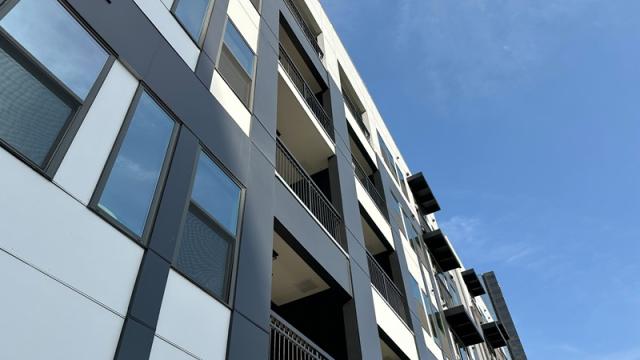webinar

Apartments.com

Record-High Apartment Supply Threatens Rent Growth
With renter demand softening and supply increasing, what’s ahead for apartment owners and operators? Jay Lybik, national director of multifamily analytics for CoStar Group, offered his analysis and forecast for the multifamily supply outlook at this year’s NAA Apartmentalize conference.
Construction is at record highs
2023 is on track to see record deliveries of multifamily units, with just over 1 million units under construction and 486,000 units forecast to be delivered nationwide this year, the highest annual delivery since the mid-1980s.
“That’s a lot of units,” Lybik said, “especially when we look back to where we’ve been over the last 10 to 12 years.”
Which markets are most at risk?
Supply is hitting markets at different rates, with 12 markets, mostly in the Sun Belt, projected to hit new records for units delivered this calendar year.
“We continue to see heavy, heavy interest from national and regional developers in these fast-growing Sun Belt markets,” Lybik said, “but the flipside is that that in a lot of these markets, we’re having an oversupply of units come online.”
Leading the pack is Austin with a total of about 17,000 units forecast to be delivered this year — a greater total than Atlanta, which has three times the population of the Texas market.
Today’s new construction is also unevenly distributed across price points, with the vast majority in four- and five-star properties, which are typically mid- or high-rise buildings with luxury, high-end units. Worsening the supply and demand woes is the fact that four- and five-star rent today is so much higher than three-star rent. This stark difference means that residents currently living in three-star properties are unlikely to be able to afford to move up into higher-end units.
To identify the markets most at risk, Lybik narrowed down three signs of distress:
- A decline in four- and five-star rent from Q1 2022 to Q1 2023
- A rise in four- and five-star vacancy rates from Q1 2022 to Q1 2023
- An increase in supply compared to the previous three-year average
Based on these variables, Lybik highlighted four “red alert” markets that feature all three variables: Atlanta, Miami, Raleigh, and Las Vegas. Additionally, eight other markets met two of three criteria, qualifying them as “yellow alert” markets: Austin, Dallas–Fort Worth, Inland Empire, Orlando, Nashville, Jacksonville, Phoenix, and Charlotte. In these 12 markets, found overwhelmingly in the Sun Belt, it’s the four- and five-star properties experiencing the greatest pain.
Relief is coming
Despite these challenging dynamics, Lybik offered an optimistic outlook for the multifamily market in the years ahead.
“We do have a little bit of light at the end of the tunnel in terms of supply,” Lybik said.
As financing has grown more difficult to obtain for new development, the flow of new projects has slowed down. Lybik highlighted two positive trends in permit data: a drop in the number of permits issued and an increase the number of approved projects that haven’t gotten off the ground.
“Every unit that’s not started today is a unit not delivering in two years,” Lybik said.
This pullback in construction will translate to a slight drop in new deliveries in 2024, followed by an even greater decline in 2025. Similar to 2010 and 2011 after the Great Recession, this pause in new deliveries will allow demand to pick up, letting the market recover to normal levels of demand and rent growth.
Explore more multifamily insights
Check out more sessions from Apartmentalize 2023! Now available on demand, these presentations offer market insights, advertising tips, and social media best practices.
See all on-demand webinars from this year’s Apartmentology Learning Lounge, or more analysis from Jay Lybik:







